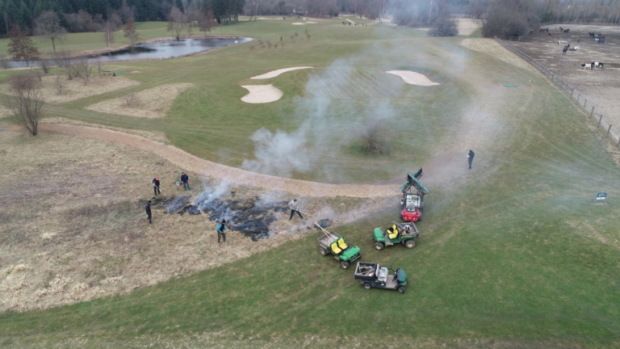News
Copenhagen golf courses eye greener greens
This article is more than 3 years old.
Five clubs in the capital region are teeing off in an EU project aimed at making sustainability par for the course

Unmanned electric robots are being employed (photo: Hørsholm Golf)
For the burgeoning number of golfers in Denmark, a day spent on the back nine on a lovely spring day is a difficult proposition to resist.
And soon, for golfers in the capital region at least, it will be a more sustainable delight to partake in as well.
Five clubs – Hørsholm Golf, Albertslund Golfbane, Hjortespring Golfklub, Smørum Golfklub and Hedeland Golfklub – will take part in an EU-financed project that helps companies in the Copenhagen area develop a more circular business model.
The EU project ‘Sustainable Bottom Line 2.0’ has partnered up with the Danish gold association DGU to, among other things, help golf clubs drive away diesel and chip in with more biodiversity.
In the near future it will mean members of the clubs will see unmanned electric robots trimming the course instead of diesel-powered mowers.
“We are looking into whether it is cost-effective to change from diesel machines to electric-driven robot mowers. We will investigate how much CO2 relief, fuel savings and work hours we can get out of it,” said Anders Kamp Mortensen, the greenkeeper at Hørsholm Golf.
“If all goes well, we can have the robots cut the fairways and semi-rough. The work hours we save here can be used to improve the quality of our greens and bunkers.”
READ ALSO: First mini-golf burger bar opens in Copenhagen
Good for the birdies
The project has also helped the clubs look into phasing out paper scorecards in favour of digital options – Hørsholm Golf alone spends about 18,000 kroner printing around 40,000 scorecards annually for its members.
Other changes being looked at include introducing LED lighting, exchanging oil furnaces for air source heat pumps and employing controlled burning of grass rather than cutting and transporting it away.
“We had a report made showing that controlled burning is the best solution, so we are doing that now for the second year. It leads to less CO2 emissions and encourages increased biodiversity,” said Tonny Jensen, a greenkeeper at Hjortespring Golfklub.

Supported by 13.9 million kroner from EU’s Regional Fund Program, the project has employed experts to analyse and map the golf clubs’ current energy consumption and help them find relevant partners.
So far, there are 21 partners behind the project, including green transition organisation Gate 21, nine municipalities, DTU, Aalborg University, energy advisors and industry organisations.










































